Section 1.1 Section 1.2 Section 1.3 - The Student Room
Section 1.1 Section 1.2 Section 1.3 - The Student Room
Section 1.1 Section 1.2 Section 1.3 - The Student Room
You also want an ePaper? Increase the reach of your titles
YUMPU automatically turns print PDFs into web optimized ePapers that Google loves.
SECTION 10<br />
<strong>Section</strong> 10.1<br />
1<br />
a b c<br />
A rate will increase with rate will increase with rate will increase with<br />
temperature temperature temperature temperature<br />
B rate of forward reaction not rate increases rate of forward reaction not<br />
total pressure of gas affected affected<br />
C increasing the concentration solutions not involved increasing the concentration of<br />
concentration of solution of acid will increase the rate peroxide will increase the rate<br />
D the more finely divided the the more finely divided the solids not involved<br />
surface area of solid magnesium, the faster the rate catalyst, the faster the rate<br />
2 Both the acid and the enzyme can act as catalysts for the<br />
hydrolysis of a protein.<br />
3 a <strong>The</strong> greater the concentration of reactants, the greater<br />
the rate of collisions and hence the faster the reaction<br />
proceeds.<br />
b A change of temperature has little effect. Most<br />
collisions result in a reaction.<br />
4 a B and C<br />
bAand D<br />
cD<br />
dB<br />
eB<br />
f D<br />
<strong>Section</strong> 10.2<br />
1 a A b A c B d Mainly B, with A to a minor extent.<br />
2 a This reaction has a high activation enthalpy that<br />
prevents it occurring at a significant rate at room<br />
temperature, but the reaction is exothermic, and once<br />
the spark has provided the energy needed to get it<br />
started, the reaction produces enough energy to<br />
sustain itself regardless of how much is present.<br />
b <strong>The</strong> platinum catalyst lowers the activation enthalpy to<br />
such an extent that it is close to the thermal energy of<br />
molecules at room temperature.<br />
3 Above a certain temperature, enzymes are denatured and<br />
become inactive.<br />
4 a <strong>The</strong> surface area of the coal is much greater in the<br />
powder than in the lump. Many more collisions with<br />
oxygen molecules are possible and the speed of<br />
reaction will be much greater.<br />
b Although the gas molecules are moving freely, the<br />
molecules have insufficient kinetic energy to<br />
overcome the activation enthalpy for reaction.<br />
c <strong>The</strong> particles in the solids are in fixed positions in their<br />
respective lattices. <strong>The</strong> only movement will be due to<br />
low energy vibrations or rotations about these fixed<br />
positions. <strong>The</strong> number of collisions is very low indeed.<br />
<strong>The</strong>re is also unlikely to be sufficient energy available<br />
to overcome the activation enthalpy for reaction.<br />
d <strong>The</strong> fine flour dust allows maximum chances of<br />
collisions with oxygen molecules. A spark will cause<br />
instant ignition followed by a very rapid reaction<br />
amounting to an explosion.<br />
5 Catalytic converters catalyse redox reactions involving<br />
CO, NO x<br />
and oxygen from the air (see Developing<br />
Fuels for details). <strong>The</strong> catalyst lowers the activation<br />
enthalpies of these reactions, but the activation<br />
enthalpies are still high, and the reactions do not occur<br />
at a significant rate until the catalyst is hot.<br />
6 <strong>The</strong> added curve is above the original, with a greater<br />
slope at the start of the reaction but plateauing at the<br />
same final volume of hydrogen given off.<br />
7 a <strong>The</strong> area shaded is underneath the T 1<br />
curve and to the<br />
right of E a<br />
.<br />
b <strong>The</strong> area shaded a different colour is underneath the<br />
T 2<br />
curve and to the right of E a<br />
, encompassing the firstcoloured<br />
area. <strong>The</strong> T 2<br />
curve has a lower and broader<br />
maximum than the T 1<br />
curve and the maximum value is<br />
shifted to the right. It tails off above the T 1<br />
curve.<br />
188<br />
<strong>Section</strong> 10.3<br />
1 a <strong>The</strong> reaction is first order with respect to<br />
bromoethane and zero order with respect to<br />
hydroxide ion.<br />
b <strong>The</strong> reaction is first order with respect to methyl<br />
methanoate, zero order with respect to water and first<br />
order with respect to H + .<br />
c <strong>The</strong> reaction is first order with respect to urea, zero<br />
order with respect to water and first order with<br />
respect to urease.<br />
d <strong>The</strong> reaction is a single step in the mechanism. It is<br />
first order with respect to the methyl radical and first<br />
order with respect to the chlorine molecule.<br />
e <strong>The</strong> reaction is order with respect to carbon<br />
monoxide and first order with respect to chlorine.<br />
f <strong>The</strong> reaction is second order with respect to nitrogen<br />
dioxide.<br />
2 a Rate = k[CH 3<br />
CH 2<br />
CH 2<br />
CH 2<br />
Cl] [OH – ]<br />
b Rate = k[C 12<br />
H 22<br />
O 11<br />
] [H + ]


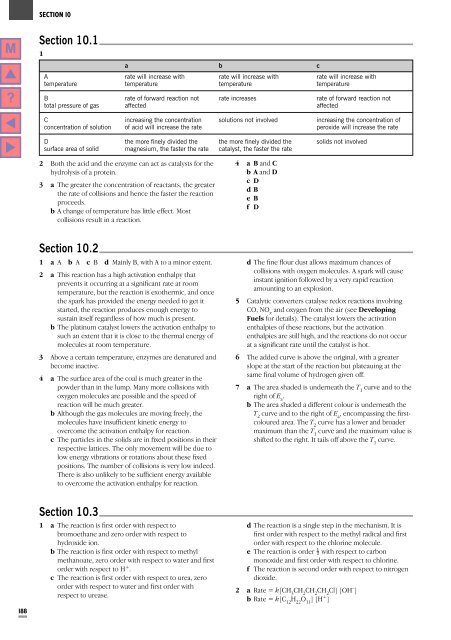
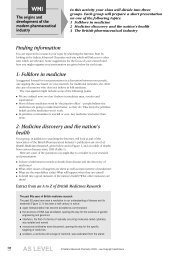
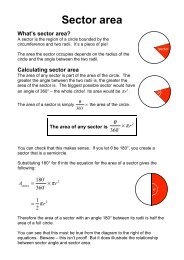
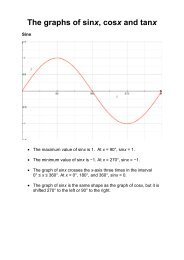
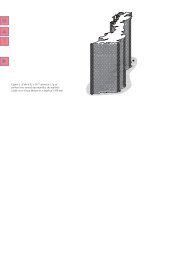

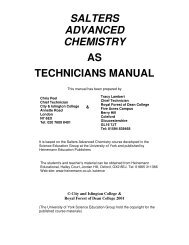


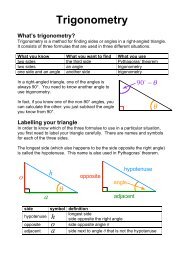
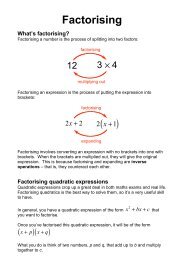
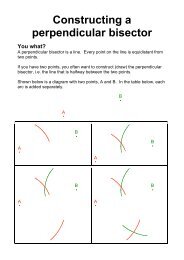

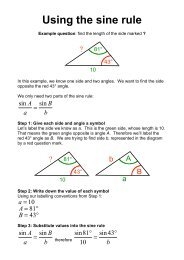
![ISI Web of Knowledge [v.4.10] - All Databases Results - Benjamin-Mills](https://img.yumpu.com/39253071/1/184x260/isi-web-of-knowledge-v410-all-databases-results-benjamin-mills.jpg?quality=85)